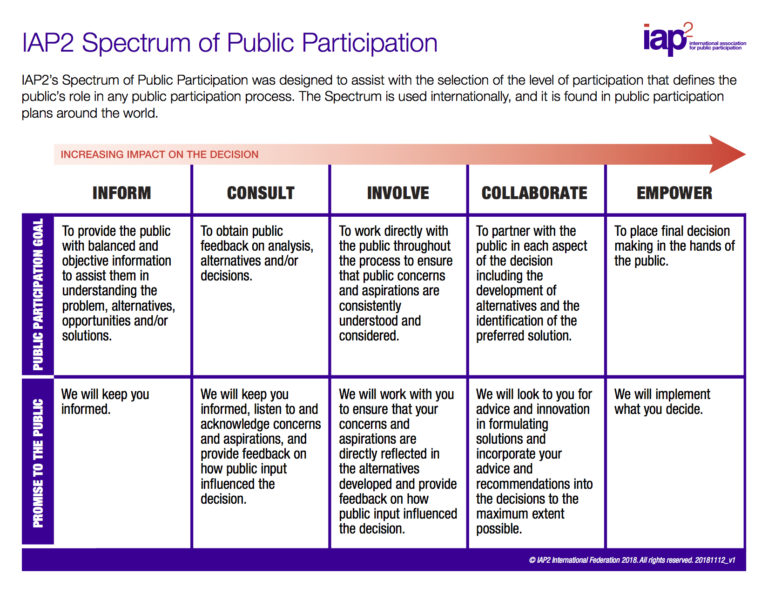As stakeholder engagement professionals, we’re key to helping shape and manage relationships that influence our clients’ or organisations’ direction.
At Articulous, we know that what we’re really doing is helping people understand that things are changing, and that they can have some influence in how that change happens and the impacts it will have in their communities and their lives. And we also know that very often, that influence can help to make the outcomes better than they would have been without community involvement.
Have you considered how much of your work centres on enabling change, and the pivotal role you play in helping people accept change? Because like death and taxes, change is inevitable and the pace of it is accelerating.
Today, we’re exploring the interplay between stakeholder engagement and change management and how understanding this dynamic can amplify our influence in helping people to willingly adopt a change.
Where our roles intersect
Stakeholder engagement and change management might seem like separate fields. We certify with different organisations, after all – usually ProSci for change management, and usually IAP2 for stakeholder engagement (in Australia, anyway).
As professionals, we just add their methodologies to our toolbox and weave them into our work as we need them. From our perspective, both disciplines fundamentally focus on managing and facilitating change so we’ve been experimenting with melding the two for a while.
Different but the same
It’s often said that change management is about helping the people or groups affected by changes to get through the change successfully so that the organisation can realise its return on investment.
Stakeholder engagement considers the broader picture, and actively collaborates with people or groups affected by a project or decision to help them inform decision making.
At Articulous we believe that the two disciplines intersect at the ‘people’ element:
- Stakeholder engagement helps to shape the change narrative, and
- Change management provides the strategies to help people navigate the change.
Their roles are complementary, and together they can help organisations to get better project outcomes.
Without effective stakeholder engagement, change management risks excluding key groups whose support is integral. Without effective change management, stakeholder engagement may overlook the needs of individual people, potentially limiting change acceptance.
Empathy is the heart of our communication
As seasoned communication professionals, we know that empathy makes communication more effective. When people are in the middle of a change, they’re often fearful and uncertain, which can lead to change resistance. Empathetic communication can turn the tide. Change management principles and tools can provide insights so we can tailor communications to understand and meet people where they are on their change journey.
Let’s explore three scenarios where effective stakeholder engagement and change management practices can deliver better outcomes:
- Small scale, merging two departments into one
- Medium scale, on an infrastructure project that will disrupt a community in many ways over several years
- Large scale, where a change is affecting many organisations across an entire state
Scenario 1: Merging two departments
Department A and Department B are merging into a single entity, Department C. It’s a significant change impacting a lot of people – staff, leadership teams, union representatives, and potentially the public.
As stakeholder engagement professionals, we need to understand the stakeholder groups’ concerns, interests, and influence, and develop a communication strategy to address these. We use IAP2’s Public Participation Spectrum to determine whether to inform, consult, involve, collaborate with, or empower our stakeholders, based on the level of public impact and the public’s potential influence on the outcome.

We develop a sponsorship map of trusted leaders to make sure that people get the information from leaders they’re likely to listen to.
Then we use ProSci tools: the impact assessment to understand how the change is going to affect the organisation and how the staff view the organisation’s capability for change. We also use ADKAR (Awareness, Desire, Knowledge, Ability, Reinforcement) to help us understand where everyone is up to with the change. These all inform the strategy.
Awareness
Starting with building Awareness, we make sure that the trusted leaders are telling people what they need to hear. We can measure how well that’s landing using ADKAR assessments.
We’d use the results of that assessment to either:
- Develop empathetic messaging that acknowledges and addresses fears and uncertainties (to take Awareness past the barrier point of 3), or
- Move into the next stage of helping people feel more engaged with the change and more likely to participate – the Desire stage of ADKAR.
Remember, ADKAR describes the five stages of change that everyone must move through for a change to be successful. We’ve found that this information can help leaders and their teams to understand that everyone moves through those five stages at a different rate. We can use ADKAR data to tailor both engagement and messaging. Staff can use it to understand which step they and their team mates are on, and can help one another through the change as well.
The project’s sponsors are critical – they must openly discuss the merger’s benefits and the vision for Department C. Active and visible leadership is critical.
Desire
Once most people are ready to move onto supporting and participating in the change – meaning they’re at Desire in ADKAR – we can use IAP2s excellent Engagement Methods tool to select the types of engagement that would be best for different stakeholders – organise workshops, town halls, World Cafes or dotmocracy – there are literally dozens of tools to choose from to help your stakeholders move through ADKAR.
Knowledge
Another ADKAR assessment tells us when people are ready for training in new systems and processes. This makes sure they have the skills they need to make Department C work with minimal disruption, or helps us know who is still struggling with something. Here we do two things:
- Work together to develop and deliver training programs and provide resources, and
- Develop new strategies to help people who are still struggling, using ProSci’s resistance management approach.
Training people in new systems while they’re still resistant will not help them learn new systems nor cooperate with developing new processes.
Ability
After training, people start to apply what they’ve learned in training to their roles in the new department, to develop their Ability.
That takes time. The change and engagement teams offer ongoing support for the transition.
This is where many projects consider the job done. They stay in place but wind down during the hypercare phase then exit. But ProSci has step 5: Reinforcement.
Reinforcement
This post go-live stage can make or break Department C. This is when people from Department A and Department B can pull out the “when wes” that mean they slowly drift back to the processes they used before, or find work arounds for things that are not working as expected.
During this phase the change and engagement team check progress and help people adapt rather than fall back. They also make sure the trusted leaders are front and centre, encouraging and recognising just how much people have done to get Department C to where it is, and to keep growing and developing new ways.
Public recognition and celebration is vital. It can be as simple as a thank you phone call or a mention in the staff newsletter. Personally, we’re big fans of chocolate.
It’s a symphony of cooperation:
Integrating the tools of both methodologies removes a lot of guesswork and helps to make sure people are engaged at every step of a change – so it’s done with them, not to them.
Scenario 2: A New Rail Corridor
Doing change with people rather than to them is perhaps not quite as easy with this scenario. Imagine a significant infrastructure project – a new rail corridor where the route is essentially fixed by geography. Many private homes will be resumed, and construction of the line will cause considerable disruption over a large area for several years. The noise, dust and traffic changes alone will impact on homeowners, local businesses, community groups, local government, and more. The challenges of this project are not only logistical but also deeply personal, as people’s homes and lives are impacted.
So how can change managers and stakeholder engagement professionals work together to help people feel that they’re not losing something, but it’s actually improving their lives? It’s a really tough ask.
Awareness
This is key. Communicating the ‘big why’ spells out the benefits for years to come – economic, social, environmental. The IAP2 Public Participation Spectrum helps us create highly detailed stakeholder maps will help shape the engagement and change plans. Finding the right trusted leaders for each part of the community is a huge challenge, but also critical. Keeping those leaders well briefed and making sure they’re available at critical times also helps people through disruption and loss.
ADKAR assessments are delivered very differently, with sample audiences to help the team understand when the Awareness phase has landed widely enough that Desire activities can begin.
Desire
People going through a disruptive change need constant reassurance that the pain is not going to last forever. They also need to be reminded of the benefits that the disruption will bring. Community meetings, consultations, pop up info booths and other relevant activities are critical. Again, IAP2 Methods Tool is a life saver in selecting and tailoring strategies to connect with the needs of different stakeholders.
Making sure people can voice their concerns, make suggestions, and have their questions answered openly can help to increase participation and reduce resistance. No project wants to manage a public campaign against it.
Knowledge
The level of knowledge here is not the same as training people on using a new software package or a new way of submitting timesheets. Here we can keep people informed and updated about the timeline, the specifics of the home resumption and compensation process, and the support available to help people find and relocate – particularly challenging in the current housing shortage!
Establishing and publishing updates as promised is critical, as is having accessible and responsive points of contact for queries or concerns.
Open days for new stations, tunnels and roads can help people feel like the new infrastructure is part of their world. Walk throughs of new bridges and tunnels have always been very well supported in Australia.
So, is it engagement or change management?
It’s people.
That’s what matters.
Ability
We’ve communicated new timetables, have worked with the community to make sure we’ve got the most meaningful signposts and most accessible pathways to the new facilities. Now people start to use the new infrastructure. They’ve walked through and along.
They need time to adapt to new routes, new services, new sounds, new ways of getting to old places, having new people moving through in new ways.
Community engagement can help to cement all of the newness, with community events where trusted leaders are available to hear concerns, and where people can give feedback on what is and isn’t working.
And as with the merging of departments, that’s often where a project stops. Job done.
Reinforcement
But the community is different. Perhaps better. Forever changed. Reinforcement activities can help to rebuild community cohesion – activities like having people at the station to help direct them to the new platform, or pop up info booths to check in with the community at regular intervals. Open days in new community spaces can help to reinforce that new normal.
Celebrating the successes for the community, with those trusted leaders, can also help to reinforce that this change has been an improvement, despite the pain.
Scenario 3: A statewide project
Strategically integrating ProSci and IAP2 tools is also highly effective for a state-wide project. We don’t need to repeat all the steps of ADKAR because this could be a book not a blog post. But we can give an overview of how integrating the tools can make a state-wide project more achievable.
As with all projects, the spectrum helps in creating personalized change journeys for each stakeholder. This means the project team can tailor support for teams in remote, rural, regional and metropolitan areas. We know that what works in Mt Isa won’t work in Moreton Bay, because their resources are very different, as are the challenges facing them.
ProSci’s risk assessment tools help in identifying potential obstacles and challenges ahead of time. This can help to set up the project with the right resources from inception, to meet the needs of stakeholders. This proactive approach to project risk bolsters communication, training, and resistance management plans. It helps to create the transparency, inclusivity and shared ownership of any new system.
In the execution phase, ProSci’s methodology guides the change implementation and the IAP2 principles inform our ongoing stakeholder engagement and communication strategies. Working together, these tools create the possibility of a participatory empathy-informed approach to change that minimises resistance and maximizes people willingly adopting the change, and the organisation seeing their return on investment.
So is it competition or the best of both worlds?
As community engagement professionals, we all have a huge selection of tools in our chests, right? But we’ve found that consciously melding these two methodologies can significantly improve outcomes of major change initiatives. It’s a more holistic approach to change that covers individual and broader stakeholder perspectives. It gives us:
- Improved Change Acceptance: Starting with ADKAR, we can make sure our communications are empathetic, address individual concerns and structured in a way that respectfully guides people through their change journey. This approach can help everyone understand that everyone changes at different rates, can reduce resistance, and create an environment where your most valuable asset – your people – can successfully and seamlessly move to your future state.
- Increased Stakeholder Alignment: IAP2’s Public Participation Spectrum can help us understand and align diverse stakeholder groups’ needs and expectations with the project’s outcomes. Then we can design the best process to help people move through the stages of change.
- Enhanced Change Resilience: Let’s face it – change is getting faster, it’s not going away. When we can use one project to build change capacity in our leaders and in our teams, we’re not just managing the current change, but enhancing our people’s resilience and capacity to handle all those other inevitable changes – at work and in their personal lives.
- Strengthened Relationships: these combined tools can show us clearly how our people are coping with our change on top of all the other changes they experience. So we can approach them with empathy that can reinforce trust and transparency between staff and leadership. These stronger relationships can be a valuable asset in future change initiatives.
Clearly, we think it’s the best of both worlds. By recognising where our roles in stakeholder engagement and change management align and diverge, we can create a more comprehensive, resilient, and empathetic approach to managing change. That way, both the organisation and its people can thrive through inevitable waves of change.





